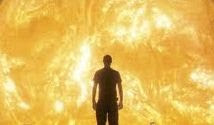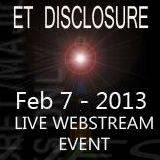http://www.enlightennext.org/magazine/j44/lachman.asp?page=1
Love and Light.
David
2013: Or, What to Do When the Apocalypse Doesn’t Arrive
by Gary Lachman
The belief in a coming end of the world as we know it may seem understandable to people living in the first decade of the twenty-first century, but a look at history shows that it has been part of Western psychology from the beginning.
The central figure of Western religion, Jesus Christ, told his followers that the end was nigh, and most people who accepted Jesus believed that the cosmic last call would come in their lifetime. Yet Jesus worked within an age-old Jewish tradition that looked to the coming of the Messiah, a religious and political leader who would set the world to rights and, incidentally, free the Chosen People from whomever it was who had conquered them at the time. As Jesus didn’t free the Jews from the Romans—nor seemed able to free himself from them either—the Jews who denied him seem justified in their disbelief. To them, and to the Romans, the Christians who preached a coming Day of Judgment were rather like the urban oracles who inhabit most major cities today, ranting on street corners and pestering passersby to repent.

Post-Jesus, the Jews didn’t give up their anticipation of a Messiah. They merely pushed back the date of his arrival, a tactic the Christians soon adopted as well when it became clear that Jesus’ Second Coming—after his crucifixion and resurrection—was delayed. The last major claimant to Messiahdom was the Turkish Jew Sabbatai Zevi, who, after gathering a huge following, ignominiously abandoned his call in 1666 when threatened with impalement by Sultan Mehmet IV. As did later students of eschatology (the study of the end times), the early Christian theorists were adept in cooking the books and explaining why their own final curtain hadn’t yet fallen. Nevertheless, against all the evidence, the belief in some once-and-for-all denouement remained strong. In 156 AD, for example, a Phrygian named Montanus declared that he was the incarnation of the Holy Spirit and that, in accordance with the Fourth Gospel, he would reveal “things to come,” such as the imminent arrival of Christ’s kingdom, which would physically descend from the heavens and transform Phrygia into a land of saints. Understandably, thousands of Christians flocked to Phrygia to await the Second Coming. Yet again, the expected kingdom’s failure to arrive did little to dampen the belief that it would eventually show up. After Montanus, there were several other false alarms, all of which ended in the same way.
Ironically, the Church itself soon became a strong inhibitor of apocalyptic thought. By the time it became the official religion of the Roman Empire, with the emperor Constantine in the early fourth century, the idea of a coming apocalypse was more of a threat than a promise. The Church was the second most powerful organization in the empire, and that it would lose this status because of the end of the world wasn’t appealing. Drawing on the work of the third-century theologian Origen, it shifted the emphasis from a historical apocalypse to a spiritual one and developed an eschatology of the individual soul. This idea caught on with the more educated and socially well-situated Christians, but the more spectacular theme of a “real-life” apocalypse remained part of the common people’s worldview and has been so ever since, as anyone aware of the enormous popularity of the Left Behind series of apocalyptic novels, based on a selective reading of the Book of Revelations, knows. Titles like The Rapture, Tribulation Force, and The Mark don’t show up on the New York Times bestseller list, but millions of readers with a taste for Christian fundamentalism buy and read these books—well—religiously, as page-turning guides to the coming end times. The overarching theme of Left Behind is the fate of those who are not right with the Lord and who face a gory retribution come the last days. A gateway to paradise for the faithful few, for the disbelieving many, the millennium is their worst nightmare.
As the historian Norman Cohn argues in The Pursuit of the Millennium, millenarian scenarios share some basic ideas. Salvation is collective, involving everyone, although not everyone will be saved; it is to be experienced here on Earth, not in some afterlife; it is on its way and will arrive suddenly; it will be total, effecting a complete transformation of life as we know it; and it is to be achieved through supernatural forces. As Cohn argues, by the Middle Ages, grassroots expectation of the millennium was rampant. With a corrupt Church, the common folk sought salvation through a cleansing apocalypse. This led to some remarkable developments, like the Brethren of the Free Spirit, a loose community of radical Christians circa 1200 who, because of the coming end times, believed they had become free of sin and acted accordingly. Wandering from village to village, they rejected private property—which meant they took whatever they wanted—and devoted themselves to hedonistic pleasures, including “free love” and drunkenness, rather like medieval hippies. Less driven by theology, this and other millenarian sects sought to escape the deprivations of their lives by envisioning a coming cosmic reversal that would set the righteous lowly at the head of the table, with the worldly powerful at best receiving scraps.
The motivation for many of these sects isn’t difficult to grasp. Socially and economically disenfranchised, they resented the generally fine living many monks and priests enjoyed, and understandably wanted some for themselves. If it took an apocalypse to bring this about, so be it. This aspect of millenarianism informed the secular varieties familiar to the modern period, and while the French and Russian revolutions lacked the supernatural forces common to most millenarian movements, they both shared the other criteria admirably. The storming of the Bastille inaugurated the Age of Reason, and the Bolshevik murder of the Romanovs announced the dictatorship of the proletariat. Hitler’s National Socialism was perhaps the most millenarian modern movement of them all, celebrating a Third Reich that would, it claimed, last a thousand years. (Thankfully, all it managed was twelve.) Yet just as the Church did, the leaders of these secular apocalypses soon clamped down on any who felt these events weren’t quite apocalyptic enough; and in all three cases, for many the end times only brought new oppression. Another example of secular millenarian belief was the hoopla in Europe that accompanied the outbreak of the First World War. Many believed that by the end of the nineteenth century Western civilization had become rotten, and they looked to war as a way of clearing away the old world in preparation for the new. It was not until the reality of trench warfare took hold that those expectations dimmed and the war was seen as yet another example of the very thing it was supposed to eliminate.
While I’ve been lucky enough to have missed anything like the French or Russian revolution and the First World War, my own lifetime has been peppered with quite a few millennial expectations. Growing up in the 1960s, through the media I was aware of the modern Brethren of the Free Spirit in places like Greenwich Village and Haight-Ashbury. I was also aware that something called the Age of Aquarius either was on its way or had already arrived (the jury is still out on this). Linked to this was the idea that the fabled lost continent of Atlantis-—which I read about in comic books and fantasy paperbacks—was due to surface sometime in 1969. Both were heralds of a coming golden age, when “peace will guide the planets and love will steer the stars.” By the early seventies such anticipations had fizzled, but in 1974 they were briefly revived when comet Kohoutek sparked new interest in apocalyptic beliefs. A Christian group called the Children of God—who, incidentally, advocated “revolutionary lovemaking” (read: promiscuity)—distributed leaflets announcing doomsday for January of that year, which my friends and I read with interest. Predictably, Kohoutek fizzled as well. That same year, the science writers John Gribbin and Stephen Plagemann published The Jupiter Effect, a bestseller predicting the devastating results (earthquakes, tidal waves, etc.) of a curious alignment of the planets on one side of the sun. When the alignment took place and nothing happened, they wrote a second book, The Jupiter Effect Reconsidered, explaining what went wrong. Not surprisingly, this sequel didn’t sell as well.
There were other millennial dates too. Remember the solar eclipse of 1999 and Y2K, the millennium bug? But the most significant millennial date so far in my lifetime surely was 1987, the year of the Harmonic Convergence—another planetary alignment—which was seen as the kickoff for the most anticipated apocalyptic event in recent years, the year 2012. For those unaware, proponents of 2012 argue that an ancient Mayan calendar—combined with permutations of the I Ching—predicts that tremendous changes will take place in that year and that, as one advocate expresses it, a “singularity,” an event of unprecedented ontological character, will take place and, as the saying goes, transform life as we know it. Recalling Norman Cohn’s criteria for millenarian belief, from everything I’ve heard about 2012, it fits the bill nicely.

I first heard of the Harmonic Convergence in 1987 when I was working at a well-known New Age bookshop in Los Angeles. Although items like crystals and other spiritual accessories were already big sellers, I was intrigued by the flood of people gathering metaphysical paraphernalia in preparation for some major event. I was informed that like Kohoutek, Atlantis, and the Aquarian Age, the Harmonic Convergence marked the end of the old world and the beginning of the new. There would be some disturbance, yes, the Harmonic Convergers I spoke with informed me; the shift into the new time would not be smooth, but I shouldn’t worry. Apparently, the bookshop was one of the safest places on the planet and I would be protected. This was, I admit, a relief, and as my apartment was just a block away from the shop, I wondered just how far the protection would reach.
The sources about the coming event were José Argüelles’s The Mayan Factor and, later, Terence McKenna’s writings on his “time wave” theory in The Archaic Revival and other books. I read Argüelles but wasn’t impressed, and when a later book, Surfers of the Zuvuya, appeared, it just seemed silly. I was also not taken with his apparent adoption of the role of avatar, an identity other proponents of 2012 seem to embrace easily. (I did, however, find an earlier book, The Transformative Vision, to be a profitable study in cultural philosophy.) I found McKenna more interesting and a better writer, but I still wasn’t sold on the idea. I heard McKenna speak, and without doubt the man had kissed the Blarney Stone, but after an entertaining ninety minutes I left the lecture no more convinced than when I arrived. The fact that he banked a great deal on a liberal indulgence in hallucinogens also made me question his seriousness. I had had my own experiences with psychedelics, and while some were interesting, for the most part they seemed more a distraction than anything else.
Much has been written about 2012, pointing out both the value and the flaws in Argüelles’s and McKenna’s interpretations. I don’t intend to repeat those here. The strangeness of the ideas did not repel me. At the time that I came across them, I was reading Rudolf Steiner, who had his own prophecies concerning the third millennium, which, to be honest, were rather vague. I had also already spent some years in the Gurdjieff “work,” so odd ideas were not a threat. What troubled me then and today is what I call the “apocalyptic gesture,” a point I raised recently on the Reality Sandwich website, much of which is dedicated to the 2012 scenario. The desire for some once-and-for-all break with the given conditions of life seems, to me at least, to be embedded in our psyche and is a form of historical or evolutionary impatience. Social, political, or cultural conditions may trigger it, but in essence it’s the same reaction as losing patience with some annoying, mundane business and, in frustration, knocking it aside with the intent to make a “clean start.” While in our personal lives this may result in nothing more than a string of false beginnings and a lack of staying power, on the broader social and political scale it can mean something far more serious.
In essays like “The Destructive Character,” “Critique of Violence,” and “Theologico-Political Fragment,” the German-Jewish cultural thinker Walter Benjamin, who combined an idiosyncratic Marxism with an equally eccentric understanding of the Kabbalah, argued for the need for apocalyptic violence in order to bring about the Messianic Age. Whether it was the class war or Jehovah’s righteous wrath, Benjamin believed in the necessity for some final conclusive event that would restore the fallen world to paradise. The violence of divine intervention and a sudden eschatological change informed Benjamin’s view of history, which he famously saw as a “single catastrophe which keeps piling wreckage upon wreckage.” This hunger for some decisive action to clear away the detritus of the postlapsarian world informed Benjamin’s personal life too, and in 1940, trying to escape from the Nazis, he committed suicide, enacting upon himself an apocalyptic violence he had long contemplated.
In mentioning Benjamin, I’m not suggesting that believers in 2012 advocate violence. I am saying that the anticipation of a singularity associated with 2012 is a manifestation of what may very well be a Jungian archetype, the archetype of the apocalypse. And while violence may not be part of the prophecy, it can easily become part of the anticlimax when the apocalypse doesn’t arrive and disappointment sets in. Recent history suggests this. The “Summer of Love” in 1967—which by many accounts wasn’t as groovy as believed—quickly became the year of “Street Fighting Man” in 1968, when the “generation gap” promised to turn into something like revolution, and dangerous slogans like “If you’re not part of the solution, you’re part of the problem” promoted a simplistic us-or-them scenario. Yet by 1969 the hopes of an Aquarian Age had been severely battered by the gruesome Charles Manson murders and the Rolling Stones’ disastrous concert at Altamont, when Hell’s Angels murdered one man and terrorized hundreds of others, including the Stones themselves. (I tell the story in Turn Off Your Mind: The Mystic Sixties and the Dark Side of the Age of Aquarius.) Exorbitantly high hopes can often lead to very deep depressions, and in a microcosmic popular sense, within a few years the peace and love unreservedly embraced by the flower generation became the “no future” of the punks. Cynicism, jadedness, and pessimism often constitute the hangover from the intoxication of excessively high expectations. No one rejects ideals more vigorously than a bruised romantic.
Again, in mentioning this I’m not saying that the many crises that lead some to look to 2012 as a solution are not real. Clearly they are. We all know them, and it would be tedious for me to roll off a list. But anticipating an apocalypse or singularity is only one response to crises. There are others. And a radical shift in the nature of things is only one possibility.
Three Possible Futures

According to Joel Garreau, Washington Post reporter and author of Radical Evolution, humans are at a precipitous turning point in history, one in which our accelerating technological capacity has made us the first species to have significant control over our own evolution. Citing trends in four major technology sectors—genetic, robotic, informational, and nanotech—Garreau says that the world could look very different in the not-too-distant future. The unanswered question is: Will it be utopian, dystopian, or something in between? We asked Garreau to give us his vision for our technological destiny.
The way I see it, there are three scenarios: heaven, hell, and prevail. In the first, heaven, all of these marvelous technologies come online rapidly. We conquer pain, suffering, stupidity, ignorance, and even death. Essentially, it looks indistinguishable from the Christian version of heaven. And it could happen. You see amazing headlines in the paper every day.
The second is the hell scenario. That’s the one in which these new technologies get into the hands of madmen or fools. Believers in this outcome suggest that if these technologies are used for ill, the whole human race could be wiped out within the next twenty years. And this is also a credible scenario.
The trouble with both the heaven and hell scenarios is that they are technodeterministic. In other words, both perspectives hold that technology drives history. They say that humans are pretty much along for the ride, and there’s not much we can do about it.
As a humanist, I’m pulling for a third scenario, which I call prevail. To understand this scenario, imagine a graph with two curves on it. One curve represents society’s increasing challenges; the second represents our potential for adaptive response. If our response curve stays more or less flat while our challenges rise exponentially, then we’re obviously in trouble, because the gap just keeps on getting wider and wider. But suppose our responses are also going up at a similar clip. That’s at the heart of the prevail scenario.
You can see an example of this in the Middle Ages. Looking at the future of the human race from the perspective of that time, you could be forgiven for thinking that we were pretty much toast. You’d be seeing marauding hordes and plagues and all sorts of evil stuff. You’d probably be thinking, “God, this isn’t going to end up well.” Then all of a sudden, in 1450, along came the printing press, and there was a new way of storing, sharing, collecting, and distributing ideas that was previously unimaginable. This led to the Renaissance and the Enlightenment, which gave birth to science, democracy, and eventually to the world we have today. What’s interesting is that all of this change was beyond the imagination of any one king or country. It was the collective action of millions of humans organizing themselves in a bottom-up way. They didn’t wait for the leaders to tell them what to do but changed their world to produce things as best they could.
We see this prevail scenario again on 9/11 with the fourth airplane that never made it to its intended target. A couple dozen people onboard, empowered by their cell phone technology, diagnosed and cured their society’s ills in a little under an hour. Was it a perfect solution? Obviously not, because they all died. But it was good enough. They were ordinary humans who didn’t wait for their leaders to come up with a solution but did it themselves. So the heart of the prevail scenario is the idea that humans can act collectively to produce astonishing change . . . and we’ve been doing this for a very long time.
Joel Garreau is a reporter for the Washington Post and author of Radical Evolution.
Author:Gary Lachman
http://www.enlightennext.org/magazine/j44/lachman.asp?page=1






No comments:
Post a Comment